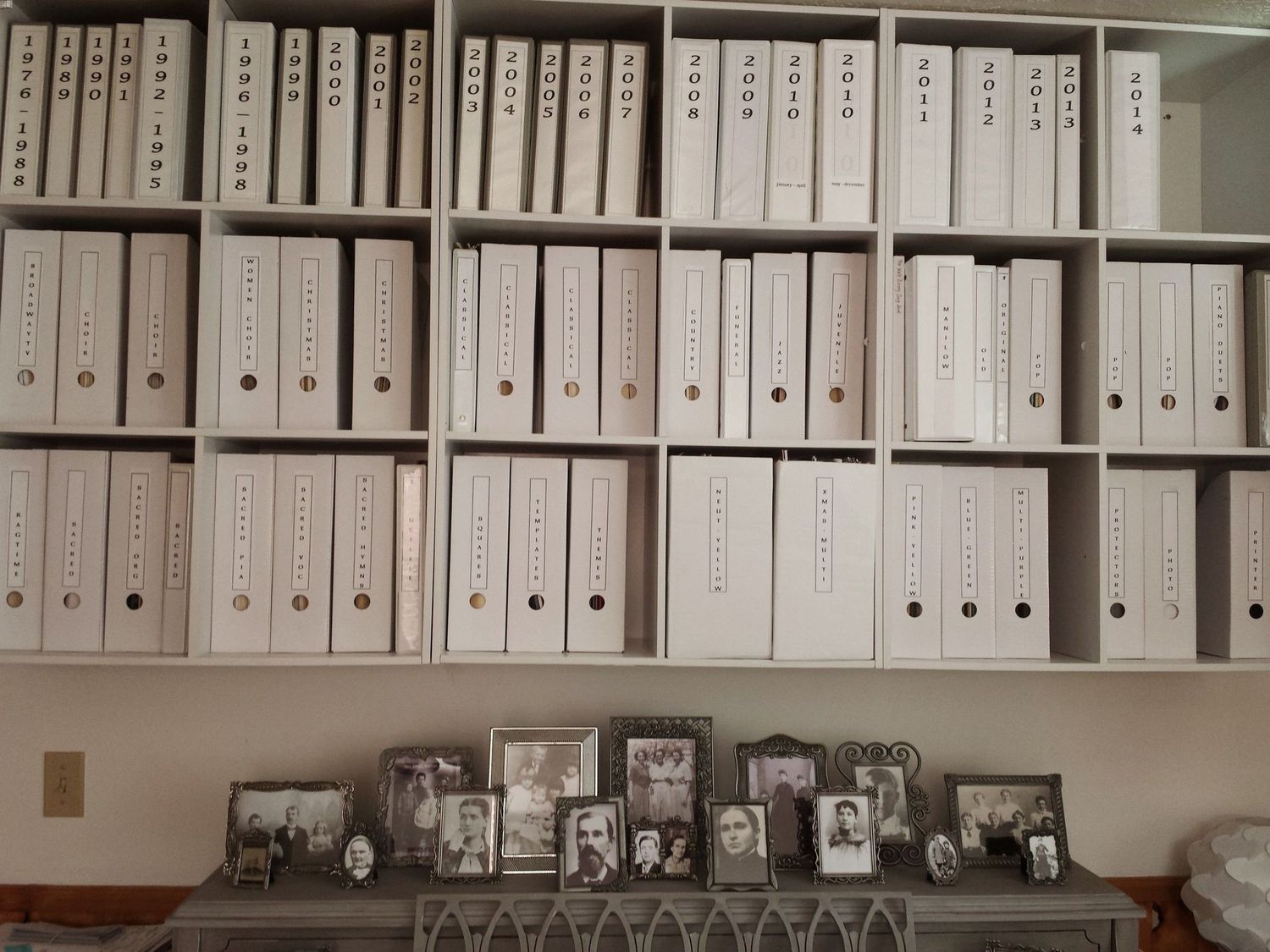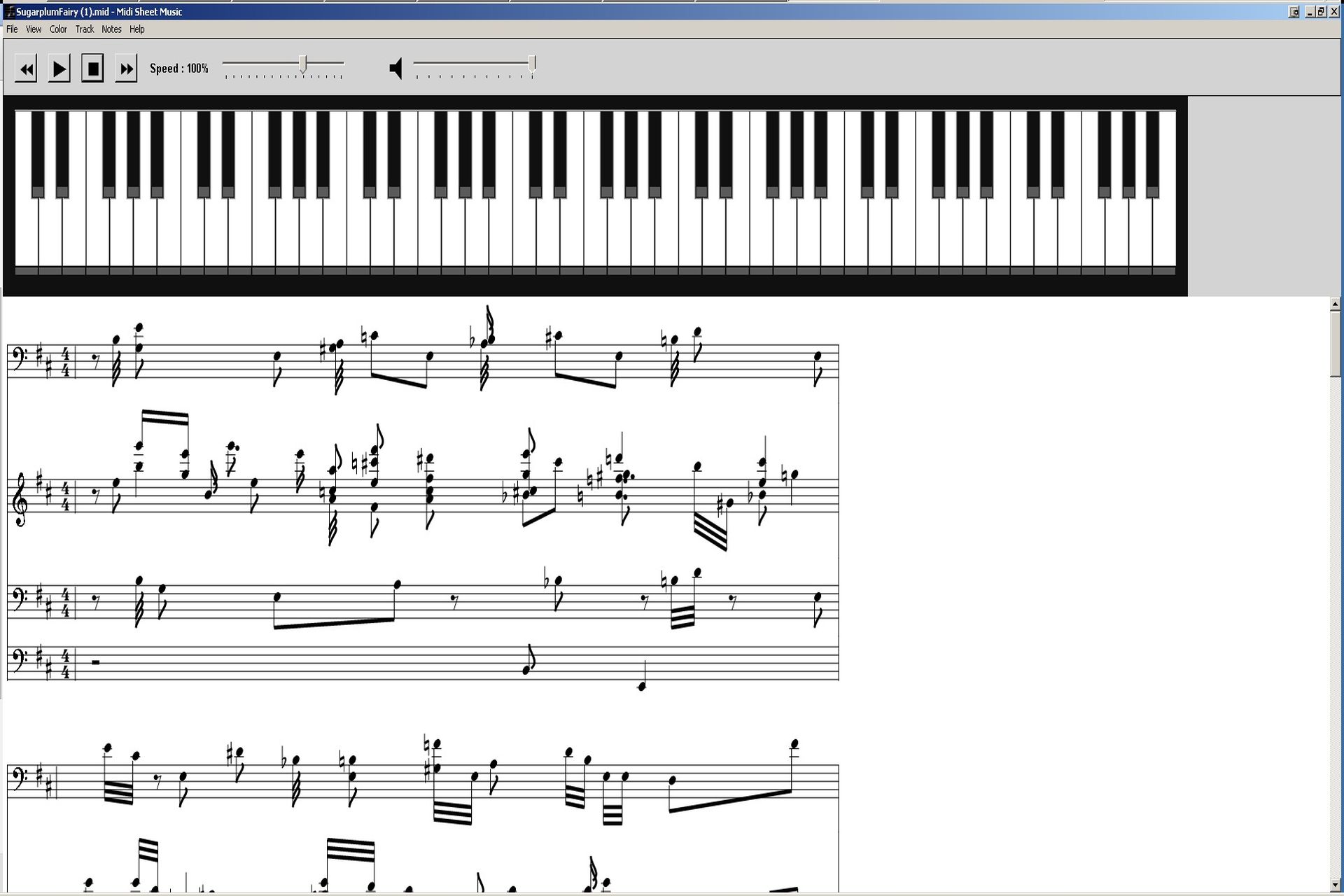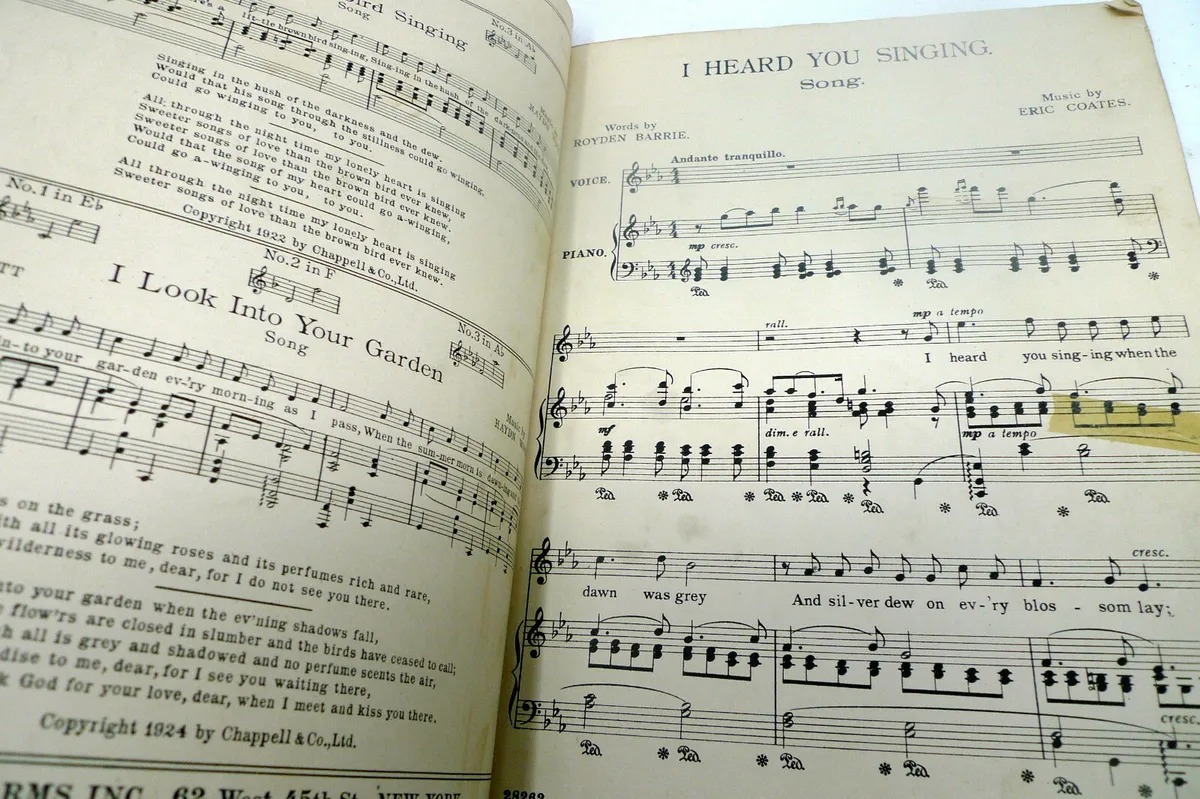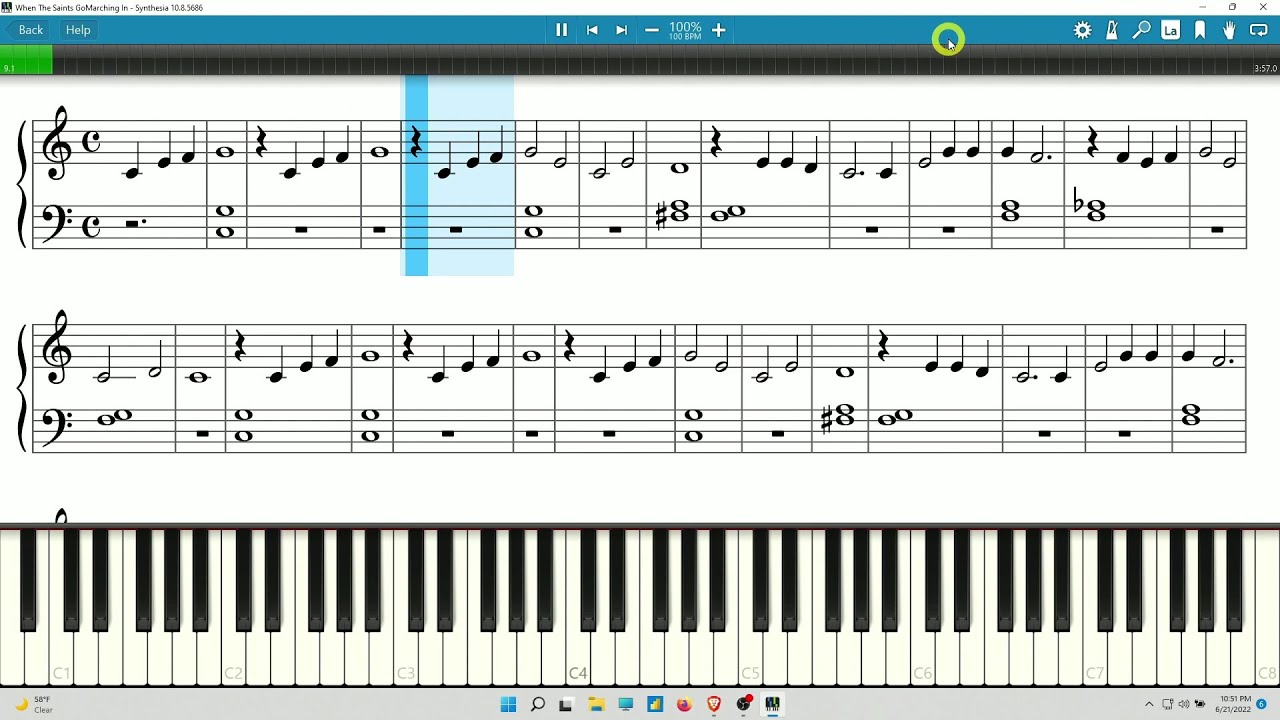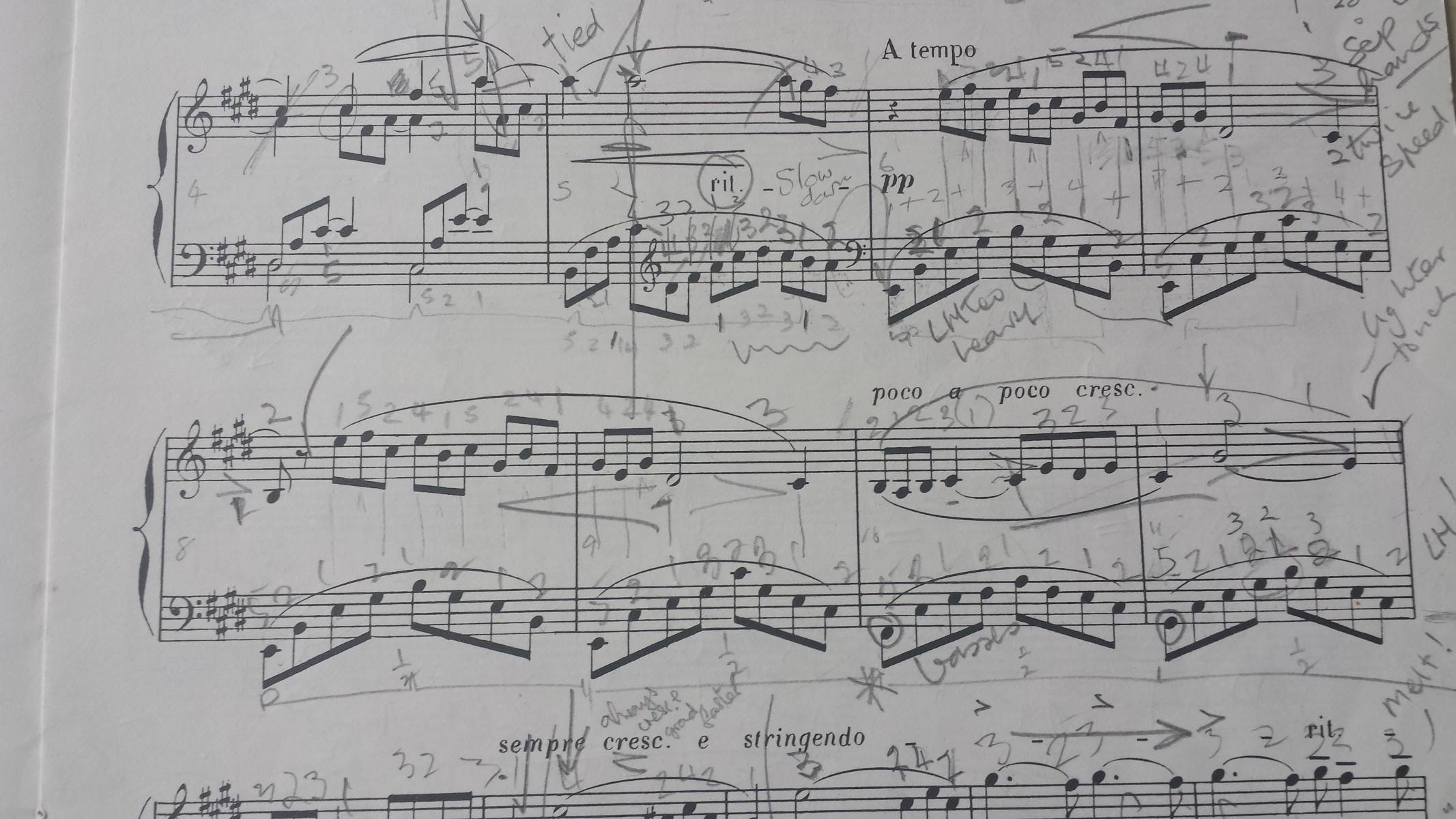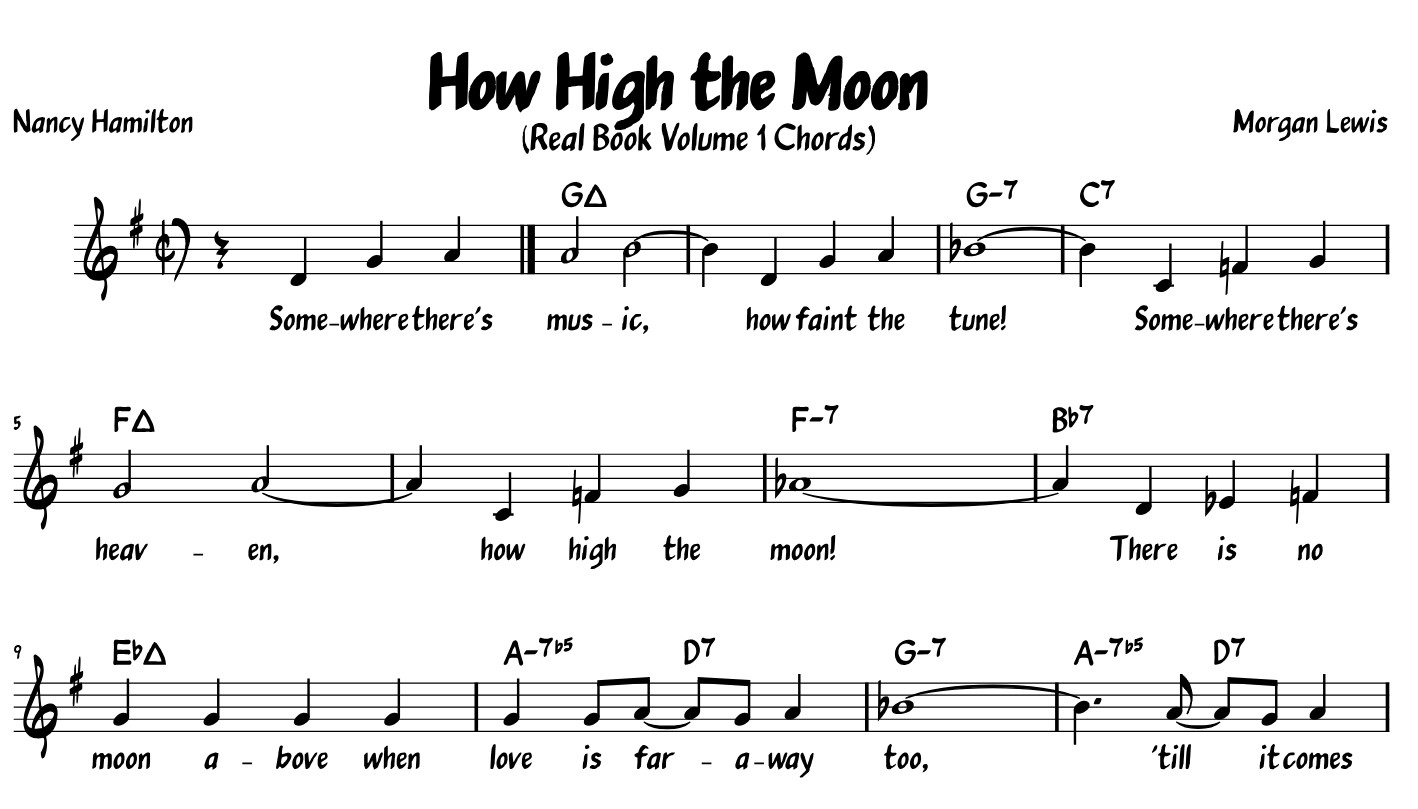Home>Production & Technology>Sheet Music>How To Publish Sheet Music
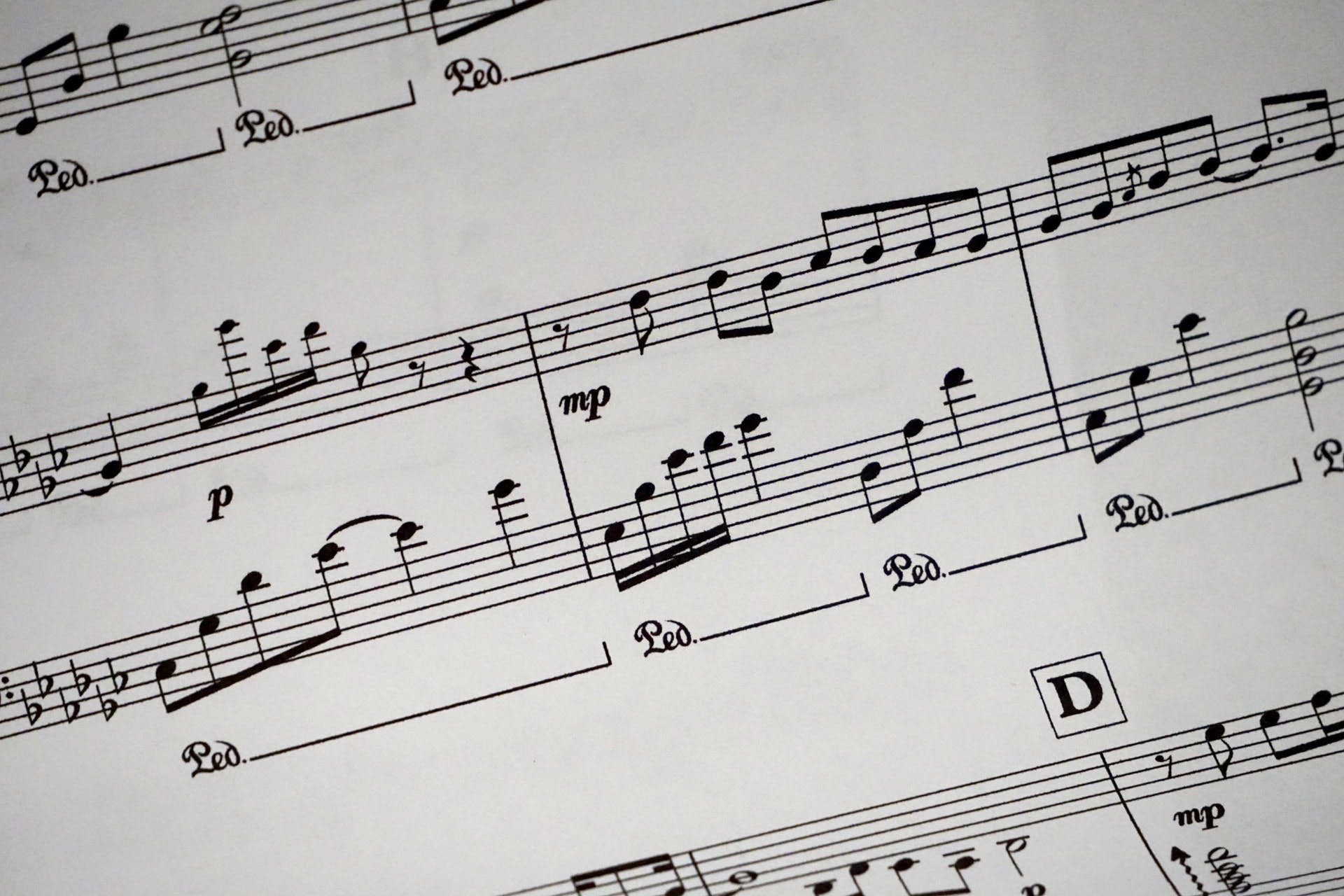

Sheet Music
How To Publish Sheet Music
Published: December 1, 2023
Learn how to publish sheet music and reach a wider audience. Discover effective strategies and tips for sharing and promoting your sheet music creations
(Many of the links in this article redirect to a specific reviewed product. Your purchase of these products through affiliate links helps to generate commission for AudioLover.com, at no extra cost. Learn more)
Table of Contents
- Introduction
- Steps to Publishing Sheet Music
- Step 1: Prepare the Sheet Music
- Step 2: Edit and Format the Sheet Music
- Step 3: Copyright and Licensing Considerations
- Step 4: Create a Digital or Physical Copy
- Step 5: Distribute and Promote the Sheet Music
- Step 6: Explore Publishing Options
- Step 7: Monitor Sales and Royalties
- Conclusion
Introduction
Welcome to the world of sheet music publishing! If you are a musician, composer, or arranger looking to share your musical creations with the world, publishing sheet music is a fantastic way to do so. Sheet music allows other musicians to perform your compositions, making it an essential medium for sharing music.
In this article, we will guide you through the process of publishing sheet music, from preparing the sheet music to distributing and promoting it. Whether you are an aspiring composer or a seasoned musician, earning recognition and compensation for your musical works is an exciting endeavor.
Publishing sheet music has become more accessible than ever before thanks to advancements in technology and the rise of digital platforms. Gone are the days of solely relying on traditional publishing houses to have your sheet music seen and performed. With the power of the internet, you have the opportunity to reach a global audience and connect with fellow musicians and music enthusiasts.
To successfully publish sheet music, you need to follow a series of steps that involve preparing, editing, formatting, copyrighting, creating, distributing, and promoting your work. Each of these steps plays a crucial role in ensuring that your sheet music is of high quality, legally protected, and effectively reaches your target audience.
Through the course of this article, we will delve into each step of the sheet music publishing process, providing you with valuable tips, insights, and best practices. By the end of this guide, you will have a comprehensive understanding of how to publish your sheet music and maximize its reach and impact.
So, let’s get started on this exciting journey of publishing your sheet music and sharing your musical genius with the world!
Steps to Publishing Sheet Music
Publishing sheet music involves a series of steps that ensure your compositions are well-prepared, properly formatted, legally protected, and effectively distributed. Here are the key steps to follow when publishing your sheet music:
- Prepare the Sheet Music
- Edit and Format the Sheet Music
- Copyright and Licensing Considerations
- Create a Digital or Physical Copy
- Distribute and Promote the Sheet Music
- Explore Publishing Options
- Monitor Sales and Royalties
The first step in publishing sheet music is to prepare your compositions for distribution. This involves transcribing your music onto sheet music paper or using music notation software to create a digital copy. Make sure to double-check for any errors or inconsistencies in the music notation, such as incorrect notes, rhythms, or dynamics.
Once you have prepared the sheet music, it’s essential to edit and format it professionally. Check for any spelling or grammatical errors in the title, composer/arranger name, tempo markings, and other text elements. Ensure that the layout of the sheet music is clear and easy to read, with consistent spacing and alignment.
Before publishing your sheet music, it’s crucial to understand the copyright and licensing aspects. Determine whether you want to retain all rights to your compositions or grant certain permissions to others. Consider registering your music with a performing rights organization to protect your rights and collect royalties when your sheet music is performed or sold.
Depending on your publishing goals, you can choose to create a digital or physical copy of your sheet music. Digital copies can be distributed through online platforms, while physical copies can be printed and sold or distributed at performances. Ensure that the file format or print quality meets industry standards and enhances the readability of the sheet music.
Once you have your sheet music ready, it’s time to distribute and promote it. Utilize various channels to reach your target audience, such as online marketplaces, music stores, personal websites, social media platforms, and collaborations with other musicians or music influencers. Develop a marketing strategy to raise awareness and drive sales of your sheet music.
Consider exploring different publishing options to expand the reach of your sheet music. Traditional publishing houses can provide wider distribution and marketing support, but they often require substantial fees or royalties. Alternatively, self-publishing gives you more control over the process and allows for direct communication with your audience.
Once your sheet music is published and available for sale, it’s essential to monitor your sales and royalties. Keep track of the number of copies sold, the platforms or stores where your sheet music is being purchased, and the royalties earned. This information will help you evaluate the success of your publishing efforts and make informed decisions moving forward.
By following these steps, you can navigate the sheet music publishing process smoothly and maximize the visibility and impact of your musical creations. Publishing and sharing your sheet music not only allows other musicians to perform your works but also helps you establish a name for yourself in the music industry.
Now that you have a clear roadmap, let’s dive deeper into each step and explore the best practices and tips to ensure a successful sheet music publishing journey.
Step 1: Prepare the Sheet Music
The first step in publishing sheet music is to prepare your compositions for distribution. This involves ensuring that your music is accurately transcribed onto sheet music paper or created digitally using music notation software. Here are some essential considerations for preparing your sheet music:
- Transcribe your music: If you have composed a piece of music or arranged an existing composition, you need to transcribe it onto sheet music. This can be done by manually writing it on sheet music paper or using music notation software like Sibelius or Finale. Take your time to accurately notate all the musical elements, including melody, harmony, rhythm, dynamics, and any other necessary markings.
- Double-check for accuracy: It’s crucial to double-check your sheet music for any errors or inconsistencies in the music notation. Review every note, rhythm, articulation, and dynamic marking to ensure their accuracy. Even a small mistake can significantly impact how your sheet music is performed and perceived by other musicians.
- Consider the readability: Pay attention to the readability of your sheet music. Use clear and legible fonts for the text elements, such as the title, composer/arranger name, tempo markings, and lyrics (if applicable). Ensure that the notation is well-spaced and organized, with adequate measures and system breaks, to facilitate ease of reading for performers.
- Include performance instructions: If there are specific performance instructions or interpretational notes that are crucial to understanding your piece, include them in the sheet music. This will help performers in accurately conveying your intended musical expression and capturing the essence of your composition.
- Proofread your work: Before finalizing your sheet music, carefully proofread it to catch any spelling, punctuation, or typographical errors. Mistakes in the text or notation can be distracting and diminish the professionalism of your sheet music. Take the time to thoroughly review every page and make necessary corrections.
Preparing your sheet music with meticulous care and attention to detail is essential for ensuring that musicians can interpret and perform your compositions accurately. It establishes a solid foundation for the subsequent steps in the publishing process and enhances the overall quality of your sheet music.
Once you have successfully prepared your sheet music, you are ready to move on to the next step: editing and formatting. This critical phase ensures that your sheet music is visually appealing, easy to read, and of professional quality. Stay tuned for the next section, where we will delve into the details of editing and formatting your sheet music.
Step 2: Edit and Format the Sheet Music
After preparing the initial draft of your sheet music, it’s time to focus on the editing and formatting process. This step is crucial in ensuring that your sheet music is visually appealing, easy to read, and professional in quality. Here are some key considerations for editing and formatting your sheet music:
- Review the layout: Take a close look at the layout of your sheet music. Ensure that the spacing between staves and systems is consistent, allowing for easy comprehension and readability. Consider the page turns and make adjustments if necessary to ensure smooth transitions for performers.
- Check for errors: Carefully review your sheet music for any errors or inconsistencies. Look out for missing accidentals, incorrect key signatures, or incorrect notation. Pay attention to details such as ties, slurs, and articulations to ensure accuracy and clarity. Make any necessary corrections to eliminate potential confusion for performers.
- Standardize notation style: Consistency in notation style is crucial for creating a professional-looking sheet music. Ensure that your notation follows commonly accepted conventions for dynamics, articulations, expression markings, and other musical symbols. This helps performers understand and interpret your music accurately.
- Edit the text elements: Pay attention to the text elements in your sheet music, including the title, composer/arranger name, tempo markings, and lyrics (if applicable). Make sure they are clear and legible, using a font that is easy to read. Double-check for any spelling or formatting errors and make necessary adjustments.
- Consider page breaks and measures: Analyze the flow of your sheet music and determine appropriate page breaks and system breaks. Avoid breaking important musical phrases or ideas across pages or systems. Additionally, ensure that measures are properly aligned, allowing for a seamless reading experience for performers.
- Enhance visual elements: Consider adding graphical elements to enhance the visual appeal of your sheet music. This could include inserting relevant images, cover art, or composer photographs. However, be cautious not to overdo it and distract from the main focus, which is the music itself.
Editing and formatting your sheet music plays a vital role in presenting your compositions in a professional manner. It ensures that performers can easily navigate and interpret your music, leading to accurate and compelling performances.
Remember to take the time to carefully review and make any necessary adjustments to your sheet music. Attention to detail in the editing and formatting process will enhance the overall quality of your sheet music, making it visually appealing and easy to follow for musicians.
Now that your sheet music is polished and ready to be shared with the world, it’s time to move on to the next step: considering copyright and licensing considerations. Stay tuned for the next section, where we will explore the importance of protecting your sheet music and understanding the various copyright and licensing options available.
Step 3: Copyright and Licensing Considerations
Protecting your sheet music and understanding the various copyright and licensing considerations are crucial steps in the sheet music publishing process. By establishing ownership and setting usage permissions, you can safeguard your creative work and ensure that it is distributed and performed according to your preferences. Here are some important copyright and licensing considerations to keep in mind:
- Understand copyright laws: Familiarize yourself with the copyright laws in your country or region. Copyright automatically grants exclusive rights to the creator of an original work, including sheet music compositions. However, the specifics of copyright law may vary, so it’s essential to understand the duration, limitations, and exceptions that apply to your sheet music.
- Decide on the type of licensing: Determine the type of licensing you want to adopt for your sheet music. You can choose to retain all rights and only allow performers to use your works with your explicit permission. Alternatively, you may want to consider issuing licenses that allow others to perform, arrange, or record your compositions in exchange for appropriate royalties or fees.
- Register with a performing rights organization (PRO): Consider registering your sheet music with a performing rights organization, such as ASCAP, BMI, or PRS. PROs help monitor and collect performance royalties on behalf of composers and publishers. Registering with a PRO ensures that you receive compensation when your sheet music is performed in public settings or recorded for commercial purposes.
- Consider Creative Commons licenses: You might want to explore Creative Commons licenses as an option for granting permissions to performers or other creators. Creative Commons licenses allow you to specify the rights you wish to retain and the permissions you wish to grant. These licenses provide flexibility in allowing others to use your sheet music while still maintaining control over its usage.
- Include copyright notices: It’s essential to include copyright notices on your sheet music to establish your ownership and indicate the terms under which it can be used. Include the copyright symbol (©), the year of publication, and your name as the copyright holder. Additionally, consider including information about how performers or users can obtain permissions or licenses to use your sheet music.
- Consult with legal professionals: If you have complex copyright or licensing requirements, it’s advisable to consult with legal professionals specializing in intellectual property law. They can provide guidance and help you navigate the legal aspects of protecting and licensing your sheet music, ensuring that your rights are properly safeguarded.
By understanding and addressing copyright and licensing considerations, you can protect your sheet music and manage how it is used and distributed. This step allows you to define your rights as a composer and ensures that you are appropriately compensated for the use of your creative works.
Now that you have a solid understanding of copyright and licensing, it’s time to move on to the next step: creating a digital or physical copy of your sheet music. We will explore the options and best practices for creating and formatting your sheet music in the upcoming section.
Step 4: Create a Digital or Physical Copy
Creating a digital or physical copy of your sheet music is an important step in the publishing process. It allows you to distribute your compositions to a wider audience and make them accessible for performances. Whether you choose a digital or physical format depends on your publishing goals and preferences. Here are some considerations for creating a digital or physical copy of your sheet music:
- Digital format:
- Convert to PDF: Convert your sheet music to the Portable Document Format (PDF), which is widely accepted and easily accessible on various platforms. PDFs retain the formatting of the original document, ensuring that your sheet music appears as intended.
- Optimize file size: Pay attention to the file size of your digital sheet music. Compress the PDF file if necessary to reduce loading times and make it easier to distribute and download. However, ensure that the quality and readability of the sheet music are not compromised.
- Consider interactive features: Take advantage of digital platforms by incorporating interactive features into your digital sheet music. This could include audio samples, video demonstrations, or links to related resources that enhance the learning and performance experience for musicians.
- Choose a distribution platform: There are numerous online platforms available for distributing and selling digital sheet music, such as Sheet Music Plus, Musicnotes, and Bandcamp. Research and choose a platform that aligns with your publishing goals and target audience.
- Physical format:
- Print quality: If you choose to create physical copies of your sheet music, ensure that the print quality meets professional standards. Use high-resolution files and select a reputable printing service for optimal results.
- Paper and binding: Select appropriate paper quality and weight that enhances the durability and readability of your printed sheet music. Consider binding options such as staple-bound or spiral-bound for ease of use during performances.
- Distribution channels: Decide how you will distribute your physical copies. This could include selling them at music stores, distributing them at performances, or offering them through your personal website or online platforms.
Creating a digital or physical copy of your sheet music allows you to make your compositions accessible and available to a broader audience. Remember to consider your target audience, distribution preferences, and the overall presentation and quality of your sheet music when making the decision between digital and physical formats.
Once you have your digital or physical copies ready, it’s time to move on to the next step: distributing and promoting your sheet music. We will explore various distribution channels and effective promotion strategies in the upcoming section.
Step 5: Distribute and Promote the Sheet Music
Now that you have your sheet music created and ready for distribution, it’s time to focus on getting it into the hands of musicians and music enthusiasts. Distributing and promoting your sheet music effectively is key to gaining visibility and generating sales. Here are some steps to consider when distributing and promoting your sheet music:
- Online platforms:
- Utilize online marketplaces: Platforms like Sheet Music Plus, Musicnotes, and Bandcamp provide a wide reach and established customer base, making it easier to distribute and sell your sheet music online.
- Personal website or blog: Create a dedicated space on your website or blog to showcase and sell your sheet music directly to your audience. This allows you to have more control over the pricing and distribution process.
- Social media promotion: Leverage social media platforms like Facebook, Instagram, and Twitter to share announcements, previews, and purchase links for your sheet music. Engage with your audience and encourage them to share your music with their network.
- Collaborations and partnerships:
- Collaborate with other musicians: Reach out to fellow musicians, ensembles, or music groups who may be interested in performing your music. Offer them a complimentary copy of your sheet music in exchange for showcasing your work.
- Partner with music influencers: Connect with popular music influencers or bloggers who have a strong presence in your niche. Request them to review or feature your sheet music on their platforms to increase visibility and credibility.
- Performances and events: Take advantage of live performances or music events to promote and sell your sheet music. Offer physical copies for sale at the venue or provide digital download codes to interested attendees.
- Marketing and advertising:
- Email newsletters: Build an email list of interested musicians and send regular newsletters featuring updates, new releases, and special offers. Focus on building relationships and engaging with your audience to encourage repeat purchases.
- Online advertisements: Consider running targeted online advertisements on platforms like Google Ads or social media platforms to reach a wider audience. Identify relevant keywords and demographics to maximize the impact of your advertising efforts.
- Music publications and blogs: Research music publications and blogs within your genre or niche. Reach out to them with press releases, exclusive previews, or interviews to generate buzz and coverage for your sheet music.
Remember that effective distribution and promotion require consistent effort and engagement with your audience. Adapt your strategies based on feedback, monitor sales and engagement metrics, and make adjustments as needed to optimize your marketing efforts.
Now that your sheet music is reaching a wider audience, it’s time to explore different publishing options. In the next step, we will discuss traditional publishing houses and self-publishing, helping you make informed decisions about the best approach for your sheet music publishing journey.
Step 6: Explore Publishing Options
When it comes to publishing your sheet music, you have various options to consider. Each option has its advantages and factors to weigh, depending on your goals, resources, and preferences. Here are two primary publishing options to explore:
- Traditional Publishing Houses:
- Wide distribution network: Traditional publishing houses have well-established distribution networks that can help get your sheet music into the hands of musicians worldwide. They often have connections with music retailers, music schools, and professional organizations.
- Publishing expertise: Publishing houses have experienced editors, designers, and marketing professionals who can polish and promote your sheet music to a high standard. They can enhance the presentation of your music and provide valuable guidance throughout the publishing process.
- Royalty and compensation: Traditional publishers typically offer a percentage-based royalty agreement, where you receive a portion of the revenue from sheet music sales. However, keep in mind that a significant portion of the earnings may go towards publisher fees and expenses.
- Exclusive contracts: When signing with a traditional publishing house, you may be required to enter an exclusive contract, which means you dedicate a specific duration to that publisher and cannot independently publish or distribute your sheet music elsewhere during that time.
- Self-Publishing:
- Control and ownership: Self-publishing allows you to retain full control and ownership over your sheet music. You have the freedom to make decisions about pricing, distribution, and marketing strategies without relying on a publishing house’s input.
- Higher royalty potential: With self-publishing, you have the potential to earn a higher percentage of the revenue from your sheet music sales. However, keep in mind that you may shoulder more of the marketing and distribution responsibilities.
- Direct communication with audience: Self-publishing platforms and techniques enable direct communication with your audience. You can build a loyal fanbase, gather feedback, and create a community around your music.
- Expenses and learning curve: Self-publishing requires investment in areas like editing, formatting, printing, or digital distribution platforms. It also requires learning the necessary skills or outsourcing tasks to professionals for optimal results.
When considering your publishing options, it’s essential to evaluate your specific goals and resources. Traditional publishing houses can offer expertise and wider distribution channels, but they often come with limitations and fees. On the other hand, self-publishing provides creative control and potentially higher earnings, but requires more involvement and investment on your part.
Take the time to research, gather information, and weigh the pros and cons of each option. Remember that there is no one-size-fits-all approach, and the best choice depends on your individual circumstances and aspirations for your sheet music.
In the final step, we will explore how to monitor sales and royalties to ensure that you are tracking the success of your published sheet music. Stay tuned for the next section!
Step 7: Monitor Sales and Royalties
After publishing your sheet music, it’s crucial to monitor the sales and royalties to assess the success of your publishing efforts and ensure that you are receiving proper compensation for your work. Here are some steps to effectively monitor sales and royalties:
- Record keeping: Maintain accurate records of your sheet music sales. Keep track of the number of copies sold, the platforms or stores where your sheet music is being purchased, and the corresponding financial transactions. Organize this information in a spreadsheet or a dedicated accounting software.
- Track royalties: If you have registered your sheet music with a performing rights organization (PRO), such as ASCAP, BMI, or PRS, they will help track and collect performance royalties on your behalf. Regularly review royalty statements provided by your PRO to ensure accurate tracking of performances and earnings.
- Communicate with distribution platforms: If you are using online distribution platforms to sell your sheet music, monitor their reporting and analytics systems. Familiarize yourself with their sales reporting methods and understand how they track sales and payments. Reach out to their customer support if you have any questions or concerns.
- Evaluate marketing efforts: Analyze the impact of your marketing and promotional activities on sheet music sales. Review engagement metrics, such as website traffic, social media interactions, and email campaign results. Identify which strategies are driving the most sales and refine your marketing efforts accordingly.
- Adjust pricing and distribution: Based on the data gathered from monitoring sales and royalties, make informed decisions about pricing and distribution. If certain platforms or stores are performing better than others, consider allocating more resources and focus on those channels. Adjust pricing as necessary to maximize revenue without compromising the accessibility of your sheet music.
- Stay connected with your audience: Engage with your audience and gather feedback to continually improve your sheet music offerings. Encourage customers to leave reviews and ratings on distribution platforms, your website, or social media profiles. Address any concerns or issues promptly to maintain a positive relationship with your audience.
Monitoring sales and royalties allows you to gauge the success of your sheet music publishing efforts and make data-driven decisions. It provides insights into the demand for your compositions, the effectiveness of your marketing strategies, and the financial impact of your work.
Regularly review and analyze the collected data to identify trends, opportunities, and areas for improvement. This continuous monitoring and evaluation will help you adapt your publishing and marketing strategies, ensuring that your sheet music remains relevant and profitable in the long run.
Congratulations on reaching the final step of the sheet music publishing process! By following these steps and staying diligent in monitoring sales and royalties, you have taken a significant leap towards establishing yourself as a successful composer or arranger.
As a closing note, remember that the publishing journey is ongoing. Stay committed to refining your skills, exploring new opportunities, and connecting with fellow musicians and enthusiasts. Enjoy the process of sharing your musical creations with the world and witnessing the impact they have on performers and listeners alike!
Conclusion
Congratulations on completing the journey of publishing your sheet music! You have taken important steps to ensure that your musical creations are well-prepared, edited, formatted, protected, and distributed to a wider audience. By following these steps, you have maximized the visibility and impact of your sheet music, and you are well-positioned to receive recognition and compensation for your artistic work.
Throughout this guide, we explored the key steps involved in publishing sheet music, from preparing and editing the sheet music to considering copyright and licensing options, creating digital or physical copies, distributing and promoting, exploring publishing options, and monitoring sales and royalties. Each step provides valuable insight and guidance to help you navigate the publishing process efficiently and effectively.
It’s important to remember that sheet music publishing is an ever-evolving field, influenced by technological advancements and shifting industry trends. Stay open to learning, adapting, and exploring new opportunities that arise. This will enable you to stay relevant, connect with your audience, and continue to grow as a composer, arranger, and publisher.
As you continue your sheet music publishing journey, remember to maintain a balance between creativity and business aspects. Pay attention to the quality of your sheet music, engage with your audience, and continuously refine your marketing strategies. Embrace both the artistic and entrepreneurial sides of sheet music publishing, and find joy in sharing your musical talents with the world.
Lastly, don’t forget to take pride in your accomplishments. Publishing sheet music is a significant achievement, and it deserves to be celebrated. So, raise a toast to your hard work, passion, and dedication, and bask in the satisfaction of knowing that your sheet music is making a valuable contribution to the musical world.
Thank you for joining us on this publishing journey. Best of luck in all your future endeavors, and may your sheet music continue to inspire and resonate with musicians and music lovers around the globe!

